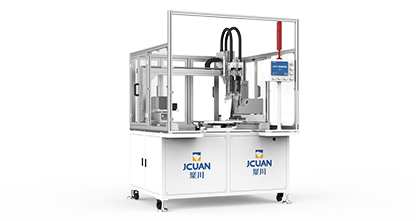Screw machines are key equipment in assembly automation,and their feeding systems directly impact the overall machine's operating efficiency and stability.Vibratory feeding,a common feeding method,is widely used in automated screw tightening due to its stable cycle and adaptability.
Vibratory feeding combines a vibrating plate with a guide rail to achieve orderly screw alignment and directional correction.Unlike air-blast feeding,this method effectively avoids blockage during feeding and is suitable for a wide range of screw materials and specifications,especially for short and special-shaped screws.

Vibratory feeding systems are often used in conjunction with photoelectric sensors and pneumatic control devices to synchronize feeding and tightening,improving automation cycle efficiency.Some screw machine models can flexibly adapt to the feeding needs of different screw batches by adjusting the vibration frequency and track angle,reducing changeover time.
Furthermore,vibratory feeding systems are easy to maintain and are less susceptible to air source fluctuations,making them suitable for assembly workstations requiring high stability.Operators can easily configure functions such as single screw output,queue buffering,and fault notifications,enhancing on-site convenience.Overall,the vibratory feeding system offers advantages such as high compatibility,controllable cycle time,and low failure rate,making it suitable for the automated assembly of small and medium-sized batches and multiple product models.Properly matching the vibratory feeding system can help improve overall machine efficiency and locking consistency.